Volume 1-8 (2009-16)
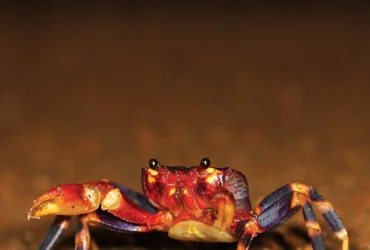 v7i1.148
v7i1.148ISSN: 1800-427X (print)
eISSN: 1800-427X (online)
DOI:10.47605/tapro.v7i1.148
Submitted date: 1 October 2014
Accepted date: 20 November 2014
Published date: 19 January 2015
Pp. 1–7, Pl. 1–3.
A NEW MONTANE SPECIES OF THE GENUS Pareas WAGLER, 1830 (SQUAMATA: PAREATIDAE) FROM NORTHERN MYANMAR
Gernot Vogel*
*Corresponding author. E-mail: gernot.vogel@t-online.de
Abstract
A new species of the genus Pareas is described from northern Myanmar. It differs from all other known species of the genus by coloration, which is mainly uniform, and its size (one of the largest species in the genus). Furthermore it is characterized by a low number of supralabials (six), a loreal that touches the orbit, presence of a presubocular and absence of a preocular. The new species was found at an elevation of 1890 m a.s.l. and is regarded as an inhabitant of high elevation mountainous areas.
Key words : Asia, Colubroidea, Oriental region, Pareas vindumi sp. nov., taxonomy
Section Editor: Olivier S.G. Pauwels
eISSN: 1800-427X (online)
DOI:10.47605/tapro.v7i1.148
Submitted date: 1 October 2014
Accepted date: 20 November 2014
Published date: 19 January 2015
Pp. 1–7, Pl. 1–3.
A NEW MONTANE SPECIES OF THE GENUS Pareas WAGLER, 1830 (SQUAMATA: PAREATIDAE) FROM NORTHERN MYANMAR
Gernot Vogel*
*Corresponding author. E-mail: gernot.vogel@t-online.de
Abstract
A new species of the genus Pareas is described from northern Myanmar. It differs from all other known species of the genus by coloration, which is mainly uniform, and its size (one of the largest species in the genus). Furthermore it is characterized by a low number of supralabials (six), a loreal that touches the orbit, presence of a presubocular and absence of a preocular. The new species was found at an elevation of 1890 m a.s.l. and is regarded as an inhabitant of high elevation mountainous areas.
Key words : Asia, Colubroidea, Oriental region, Pareas vindumi sp. nov., taxonomy
Section Editor: Olivier S.G. Pauwels
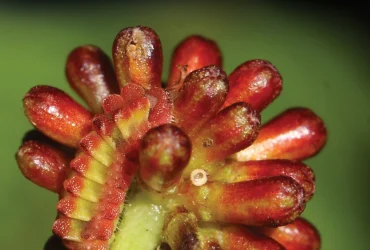 v6i2.137
v6i2.137ISSN: 1800-427X (print)
eISSN: 1800-427X (online)
DOI:10.47605/tapro.v6i2.137
Submitted date: 9 July 2013
Accepted date: 17 July 2014
Published date: 30 August 2014
Pp. 72–75, Pls. 1–2.
A NEW SPECIES OF Sonerila (MELASTOMATACEAE) FROM THE WESTERN GHATS OF KERALA, INDIA
K.P. Deepthikumary & A. G. Pandurangan
*Corresponding author. E-mail:
Abstract
A new species, Sonerila keralensis, from the Western Ghats of Kerala is described and illustrated. It is allied to S. rheedei differing by having a tuberous root stock, three to seven flowers, and petals with sparsely glandular-hairy margins.
Key words : taxonomy, Sonerila keralensis, Thirunelli, Melastomataceae, tropical Asia, endemic
Section Editor: James L. Reveal
eISSN: 1800-427X (online)
DOI:10.47605/tapro.v6i2.137
Submitted date: 9 July 2013
Accepted date: 17 July 2014
Published date: 30 August 2014
Pp. 72–75, Pls. 1–2.
A NEW SPECIES OF Sonerila (MELASTOMATACEAE) FROM THE WESTERN GHATS OF KERALA, INDIA
K.P. Deepthikumary & A. G. Pandurangan
*Corresponding author. E-mail:
Abstract
A new species, Sonerila keralensis, from the Western Ghats of Kerala is described and illustrated. It is allied to S. rheedei differing by having a tuberous root stock, three to seven flowers, and petals with sparsely glandular-hairy margins.
Key words : taxonomy, Sonerila keralensis, Thirunelli, Melastomataceae, tropical Asia, endemic
Section Editor: James L. Reveal
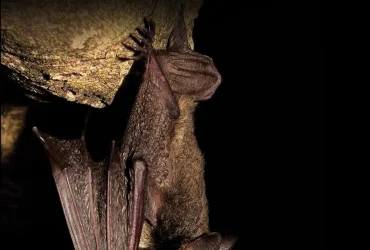 v6i1.120
v6i1.120ISSN: 1800-427X (print)
eISSN: 1800-427X (online)
DOI:10.47605/tapro.v6i1.120
Submitted date: 10 September 2012
Accepted date: 25 February 2013
Published date: 29 June 2014
Pp. 1–6, Pl. 1.
POPULATION DENSITY AND BIOMASS OF THE WILD PREY SPECIES IN A TROPICAL DECIDUOUS FOREST, CENTRAL INDIA
Kannadasan Narasimmarajan*, Subhasis Mahato & Abinash Parida
*Corresponding author. E-mail: wildlife9protect@gmail.com
Abstract
For proper management of a wildlife reserve, it is essential to estimate density and biomass of herbivores that in turn determine the density of carnivores. We estimated the population density and biomass of three ungulates and two other species in the Melghat Tiger Reserve, Central India. The study was conducted from September 2010 to April 2011. We used distance sampling to estimate the population density of wild prey species. The 225km2 intensive study area was found to have high prey species density (69.5±8.3 individuals/km2), with gray langur being the abundant prey species (42.9±7.2 individuals/km2), followed by sambar (10.5±3.5 individuals/km2), gaur (5.8±1.7 individuals/km2), barking deer (2.7±0.3 individuals/km2), and peafowl (7.6±0.6 individuals/km2). When the density figures were multiplied by the average weight of each prey species, biomass of 6501.8 kg/km2 was obtained.
Key words : Abundance; Anthropogenic; Carnivore; Gugamal National Park; Melghat Tiger Reserve
Section Editor: Lee E. Harding
eISSN: 1800-427X (online)
DOI:10.47605/tapro.v6i1.120
Submitted date: 10 September 2012
Accepted date: 25 February 2013
Published date: 29 June 2014
Pp. 1–6, Pl. 1.
POPULATION DENSITY AND BIOMASS OF THE WILD PREY SPECIES IN A TROPICAL DECIDUOUS FOREST, CENTRAL INDIA
Kannadasan Narasimmarajan*, Subhasis Mahato & Abinash Parida
*Corresponding author. E-mail: wildlife9protect@gmail.com
Abstract
For proper management of a wildlife reserve, it is essential to estimate density and biomass of herbivores that in turn determine the density of carnivores. We estimated the population density and biomass of three ungulates and two other species in the Melghat Tiger Reserve, Central India. The study was conducted from September 2010 to April 2011. We used distance sampling to estimate the population density of wild prey species. The 225km2 intensive study area was found to have high prey species density (69.5±8.3 individuals/km2), with gray langur being the abundant prey species (42.9±7.2 individuals/km2), followed by sambar (10.5±3.5 individuals/km2), gaur (5.8±1.7 individuals/km2), barking deer (2.7±0.3 individuals/km2), and peafowl (7.6±0.6 individuals/km2). When the density figures were multiplied by the average weight of each prey species, biomass of 6501.8 kg/km2 was obtained.
Key words : Abundance; Anthropogenic; Carnivore; Gugamal National Park; Melghat Tiger Reserve
Section Editor: Lee E. Harding
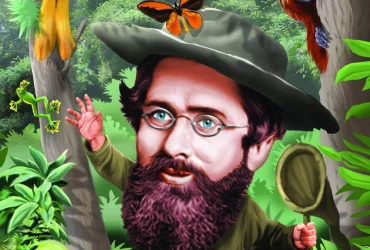 v7i3.182
v7i3.182ISSN: 1800-427X (print)
eISSN: 1800-427X (online)
Alfred Russel Wallace Centenary Issue
DOI:10.47605/tapro.v7i3.182
Proceedings of the Second International Conference on Alfred Russel Wallace and the Wallacea
Organised by the Indonesian Academy of Sciences
Wakatobi - Indonesia (10–13 November 2013)
J. Supriatna, A.A.T. Amarasinghe, and C. Margules (Editors)
Published date: 30 July 2015
Pp. I–IX.
THE TERNATE OF ALFRED RUSSEL WALLACE
Sangkot Marzuki* & Syamsir Andili
*Corresponding author. E-mail: sangkot.marzuki@gmail.com
Abstract
The island-city of Ternate, the original spice island of the Moluccas archipelago in today’s Indonesia, has a special place in the life story of Alfred Russel Wallace. It was from here he sent out his two legendary scientific publications that established him as co-founder of the theory of evolution with Charles Darwin, and as father of biogeography. What was Ternate like in the second half of the 19th century? Where did Wallace reside during his time there? And what did his house look like? This report documents the results of our enquiry into these questions and proposes that his house be reconstructed and used as a local Alfred Russel Wallace and the Wallacea museum.
Key words : Science history, Indonesian archipelago, evolution, Wallace Line, Wallacea
eISSN: 1800-427X (online)
Alfred Russel Wallace Centenary Issue
DOI:10.47605/tapro.v7i3.182
Proceedings of the Second International Conference on Alfred Russel Wallace and the Wallacea
Organised by the Indonesian Academy of Sciences
Wakatobi - Indonesia (10–13 November 2013)
J. Supriatna, A.A.T. Amarasinghe, and C. Margules (Editors)
Published date: 30 July 2015
Pp. I–IX.
THE TERNATE OF ALFRED RUSSEL WALLACE
Sangkot Marzuki* & Syamsir Andili
*Corresponding author. E-mail: sangkot.marzuki@gmail.com
Abstract
The island-city of Ternate, the original spice island of the Moluccas archipelago in today’s Indonesia, has a special place in the life story of Alfred Russel Wallace. It was from here he sent out his two legendary scientific publications that established him as co-founder of the theory of evolution with Charles Darwin, and as father of biogeography. What was Ternate like in the second half of the 19th century? Where did Wallace reside during his time there? And what did his house look like? This report documents the results of our enquiry into these questions and proposes that his house be reconstructed and used as a local Alfred Russel Wallace and the Wallacea museum.
Key words : Science history, Indonesian archipelago, evolution, Wallace Line, Wallacea
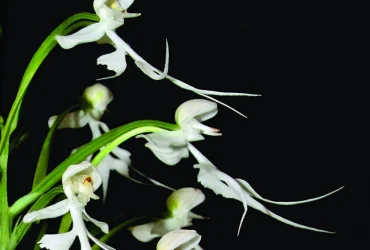 v7i2.181
v7i2.181ISSN: 1800-427X (print)
eISSN: 1800-427X (online)
DOI:10.47605/tapro.v7i2.181
Submitted date: 8 December 2014
Accepted date: 8 January 2015
Published date: 20 February 2015
Pp. 118–119.
Tylophora rotundifolia (Asclepiadaceae) in Sitamata Wildlife Sanctuary, Rajasthan, India
S.K. Sharma*
*Corresponding author. E-mail: sksharma56@gmail.com
Sitamata Wildlife Sanctuary (74°25'-74°40E and 24°04'-24°23'N), is situated in the Chittorhgarh and Pratapgarh districts of Rajasthan, India. It covers an area of 423 km2. According to Champion and Seth (1968), the forest of the sanctuary is tropical deciduous, dominated by Sagwan (Tectona grandis L.f.), Mahuwa (Madhuca indica J.F. Gmel.), Charoli (Buchanania lanzan Spreng.), Sadar (Terminalia tomentosa Wight & Arn.) , Kohda (Terminalia arjuna (Roxb. ex DC.) Wight & Arn.), Baheda (Terminalia bellirica (Gaertn.) Roxb.), Timru (Diospyros melanoxylon Willd.), Rohan (Soymida febrifuga (Roxb.) A. Juss.), Belpatra (Aegle marmelos (L.) Corrêa), Salar (Boswellia serrata Roxb.), Aam (Mangifera indica L.), Amla (Emblica officinalis Gaertn.), Haldu (Adina cordifolia[i] (Roxb.) Brandis), Bargad ([i]Ficus benghalensis L.), Dhawada (Anogeissus latifoliai (Roxb. ex DC.) Wall. ex Guillem. & Perr.) etc.
Section Editor: James L. Reveal
eISSN: 1800-427X (online)
DOI:10.47605/tapro.v7i2.181
Submitted date: 8 December 2014
Accepted date: 8 January 2015
Published date: 20 February 2015
Pp. 118–119.
Tylophora rotundifolia (Asclepiadaceae) in Sitamata Wildlife Sanctuary, Rajasthan, India
S.K. Sharma*
*Corresponding author. E-mail: sksharma56@gmail.com
Sitamata Wildlife Sanctuary (74°25'-74°40E and 24°04'-24°23'N), is situated in the Chittorhgarh and Pratapgarh districts of Rajasthan, India. It covers an area of 423 km2. According to Champion and Seth (1968), the forest of the sanctuary is tropical deciduous, dominated by Sagwan (Tectona grandis L.f.), Mahuwa (Madhuca indica J.F. Gmel.), Charoli (Buchanania lanzan Spreng.), Sadar (Terminalia tomentosa Wight & Arn.) , Kohda (Terminalia arjuna (Roxb. ex DC.) Wight & Arn.), Baheda (Terminalia bellirica (Gaertn.) Roxb.), Timru (Diospyros melanoxylon Willd.), Rohan (Soymida febrifuga (Roxb.) A. Juss.), Belpatra (Aegle marmelos (L.) Corrêa), Salar (Boswellia serrata Roxb.), Aam (Mangifera indica L.), Amla (Emblica officinalis Gaertn.), Haldu (Adina cordifolia[i] (Roxb.) Brandis), Bargad ([i]Ficus benghalensis L.), Dhawada (Anogeissus latifoliai (Roxb. ex DC.) Wall. ex Guillem. & Perr.) etc.
Section Editor: James L. Reveal
Hubungi Kami
The ultimate aim of the journal is to provide an effective medium for communication of the latest and best scientific information.
Copyright © 2020 Taprobanica. All Rights Reserved
Jasa Pembuatan Website by IKT




